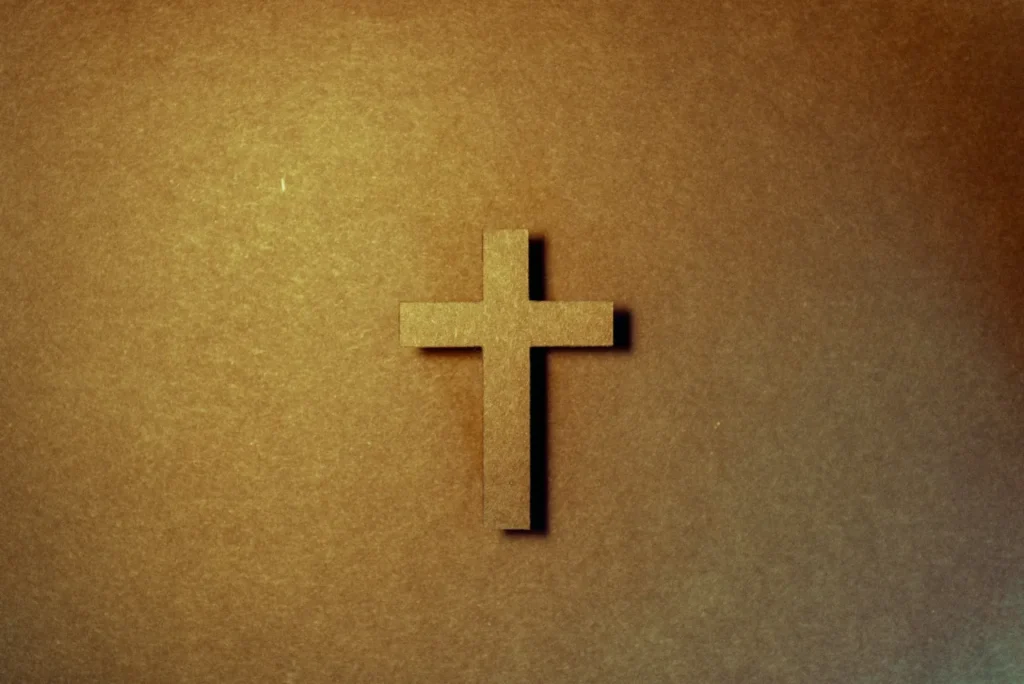We are in the month of “LGBTQ+ pride,” so it is that time of year when rainbows flood the facades of public buildings, corporate logos, clothing stores, and shopping bags. Everything is filled with rainbows because that is the chosen symbol for the movement of homosexuals, bisexuals, transsexuals, pomosexuals, gender fluid, and any type of sexuality that goes against divine will. Nowadays, if you wear a shirt, a sticker, or sneakers with different colors, anyone will immediately assume you are part of this collective, because the symbol has been hijacked and monopolized by them. But, what does the rainbow really mean?

1. God Punishes Sin
Let’s see in the Bible where this symbol comes from and what it means. What we will discover is a terrifying and wonderful story that speaks to us of the Gospel and its protagonist, Christ. Join me in discovering the Gospel according to the rainbow.
The rainbow was placed in the sky for the first time on a specific occasion and with a purpose. In Genesis 6:5-8, we see a God who is fully aware of humanity’s sin and does not ignore it. He cares about sin so much that He is willing to bring a terrible flood upon the entire earth to sweep away all the wickedness harbored in the human heart, which has filled the world with corruption.
So, the first reality regarding the meaning of the rainbow is that God does not accept everything. Rather, it symbolizes quite the opposite. God is intolerant of sin and judges it severely. The fact that this symbol has been taken by a movement that celebrates sin is monstrous because it sends a message that is exactly the opposite of what it truly means.
God takes sin very seriously and will repay each person according to their deeds (Romans 2:6). We cannot do whatever we want, flagrantly going against what God has designed and stipulated, and expect that God will not intervene to judge us. Much less can we use the symbol to assert that all behavior should be tolerated and celebrated. The symbol means exactly the opposite!
2. God is Merciful
At the very moment God affirms His intention to destroy all flesh through the waters of the flood, He affirms the reality of a second way in His plan to deal with sin: grace. Genesis 6:8 says, “But Noah found favor in the eyes of the Lord.” This has been the case throughout the Bible. God deals with sin in two ways: on one hand, He judges it justly, but on the other, He forgives it with mercy. This is what He did with Noah and his family. God chose Noah to carry out a greater plan, a plan marked by grace. Thus, He sets Noah as a new Adam, the first man of a new creation, pointing to another man in the future who would inaugurate a new and perfect creation.
God gives Noah a plan to survive by building an ark in which they endure the flood. After the earth has been cleansed, the people come down from the ark and begin anew. But before anything else, God wants to make something clear to them, and that is where the symbol of the rainbow comes in.
In Genesis 9, God gives Noah the necessary information to start civilization (Genesis 9:1-7) and establishes a covenant with all creation, with Noah as the intermediary (Genesis 9:8-17). In this covenant, God solemnly commits to never again destroy the earth by flood. God had risen in war against man’s sin, but that war, which had exterminated countless lives, was coming to an end. The Lord considers that hostilities between Him and the cosmos, because of man’s wickedness, had ended. Evil had been, at least, contained through death.
So He sets a sign to remember this covenant, and that symbol is the rainbow. That a covenant has a sign is something we see in the different covenants God has made with humanity. For example, in Genesis 17:11, God imposes a sign on the covenant He made with Abraham, which is circumcision. The same occurs with the covenant God made with the people of Israel at Sinai, where they were given the sign of the Sabbath day of rest.
A sign is the symbolic and constant expression of the reality and validity of the covenant. It is not the covenant itself, and the covenant could have been given without that sign, but it is an element added so that the parties remember that the covenant is still in force and that they must fulfill its stipulations. When we marry, we exchange rings; that is the sign of our marriage covenant. We could have perfectly well gotten married without exchanging rings, and the marriage is perfectly legitimate without them, but it is a symbol that reminds us that we are married, with all that implies.
This is what God Himself says when imposing this sign of the covenant: “and I will remember My covenant…” (Genesis 9:15). Although God has no need for a reminder to fulfill His word, we do need to understand that God will not forget and that He will faithfully fulfill it. The rainbow completely eliminates the possibility of God forgetting. Every time you see a rainbow in the sky, you should know that God perfectly remembers His promise and will never again destroy the earth by water.
Just as it happened with Noah, we have been saved from the terrible end we deserved, along with the rest of humanity, by His grace. Thus, the second reality the rainbow shows us is that our God is tremendously good to us, so good that He has not repaid us according to our wickedness but according to His mercy. That is something that we, as descendants of Noah, also partake in.
In the next post, we will analyze the other two wonderful realities that God teaches us through the rainbow.



Pingback: The Gospel according to the Rainbow. Part 2 - Miguel Ángel Pozo